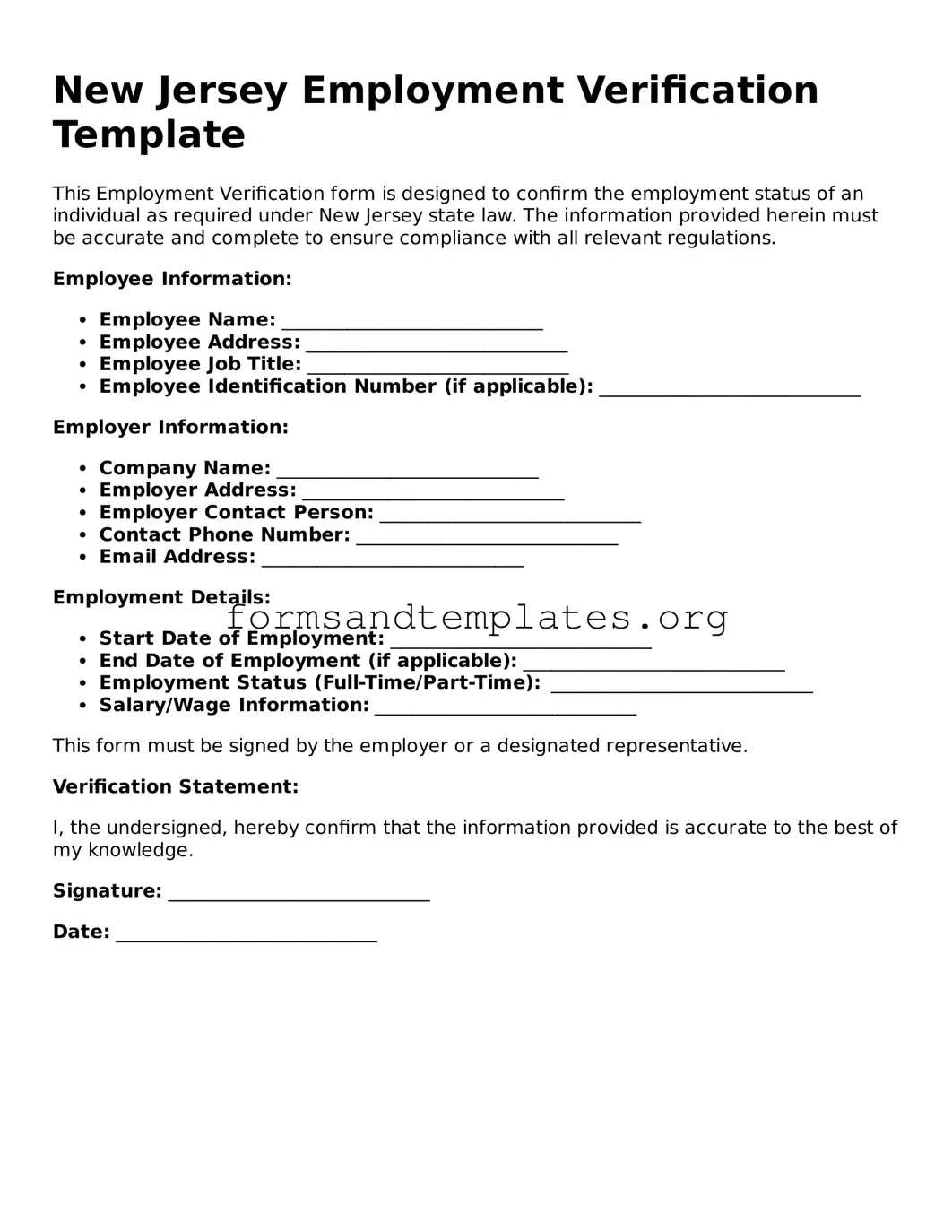New Jersey Employment Verification Template
This Employment Verification form is designed to confirm the employment status of an individual as required under New Jersey state law. The information provided herein must be accurate and complete to ensure compliance with all relevant regulations.
Employee Information:
- Employee Name: ____________________________
- Employee Address: ____________________________
- Employee Job Title: ____________________________
- Employee Identification Number (if applicable): ____________________________
Employer Information:
- Company Name: ____________________________
- Employer Address: ____________________________
- Employer Contact Person: ____________________________
- Contact Phone Number: ____________________________
- Email Address: ____________________________
Employment Details:
- Start Date of Employment: ____________________________
- End Date of Employment (if applicable): ____________________________
- Employment Status (Full-Time/Part-Time): ____________________________
- Salary/Wage Information: ____________________________
This form must be signed by the employer or a designated representative.
Verification Statement:
I, the undersigned, hereby confirm that the information provided is accurate to the best of my knowledge.
Signature: ____________________________
Date: ____________________________
